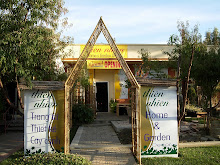Growing Tips Best Planting Time / Soil Preparation / Planting / Cutting Back / Pinching / Lateral Removal / Disbudding / Fertilizers / Insects and Disease / Winter Care / Cascade Culture |
Can I Grow All of These Mums in My Area? All of our large, exhibition style varieties are as easy to grow as any ordinary Chrysanthemums are sun lovers, and can be grown in pots or in the ground, in a location which receives at least a half a day of sun. In colder areas where the bloom season may be shortened by cold weather, potted mums should be moved to a protected area. In cold locations, chrysanthemums growing in the ground can be potted up in September and moved into a sheltered area. They suffer little setback with this procedure, and you can have beautiful blooms through Thanksgiving! If you live in a hard freeze zone, choose varieties with earlier bloom dates. The With just a few provisions, our customers have enjoyed beautiful fall chrysanthemums in climates as diverse as Arizona and Michigan! Growing Instructions Best Planting Time: The largest flowered types should be planted as soon as weather and soil conditions permit. Small flowered types can be planted as late as July. Top Soil Preparation: Chrysanthemums will grow in almost any soil type. But, the addition of humis materials such as manure, compost, leaf mold, or peat moss is very beneficial. Superphosphate at the rate of 3 lbs. per 100 square feet is Planting: Shallow planting, no deeper that the plant was in its rooting mixture. Initial planting should be into small pots until established and growing well. Space 15 inches apart in all directions. Good drainage is most important.Top Cutting Back: If your plants are more than 10" tall on July 1st, we recommend cutting back to 4" or 6", leaving some good green foliage or growth below the cut. The result will be shorter plants and better foliage at bloom time. On large flowered cultivars, select the most vigorous growth that results after the cut and make no further stops or pinches. Top Pinching: When growth resumes after cutting back, removal of the very tip growing portion of the stem will promote more branching and flowers, and in some cases help determine bloom date. Large flowered types should not be Lateral Removal: Large flowered types will only achieve their full potential of size and form if growth is restricted to several stems, three being an average. All side laterals or branches must be removed as they occur. Remove them when they are short and soft so they do not rob the stem and developing buds of potential growth. Top Disbudding: Large flowered types will only reach their maximum size if flower buds are restricted one to a stem. For best results, remove all but the largest center bud in a terminal bud cluster when bud clusters are still very small. Terminal bud clusters will contain from 3 to as many as 5 buds. Crown buds Fertilizers: The regular use of a high Nitrogen and Potassium fertilizer will greatly increase flower size and numbers, We recommend incorporating a slow re-lease fertilizer such as Osmocote 14-14-14 at planting time plus a weekly feeding of a high analysis liquid fertilizer such as Rapid Grow, after August 1st and until flower buds show color. Change to a 10-10-10 fertilizer, or no fertilizer, after this date. Top Insects and Disease: Careful monitoring of your insect population is
|
Chrysanthemum Cascade Culture OVERVIEW: SELECTION OF CULTIVAR: POTTING SOIL: PLANTING TIME AND CONTAINER: TRELLISED WIRE SUPPORT: TRAINING AND PINCHING: FEEDING AND WATERING: Aphids will be the main problem. Establish a regular schedule of once a week spraying or dusting with a general purpose spray or rose dust until buds show color. After this time dust lightly only, or flower injury may occur. If insecticide resistance is encountered, change to an entirely different unrelated chemical or insecticidal compound. |
King's Mums, 14857 S Brunner Rd, Oregon City, OR, 97045 | 503.656.2078
email: mums@kingsmums.com
Copyright 2010, King's Mums, LLC
http://www.kingsmums.com

No comments:
Post a Comment